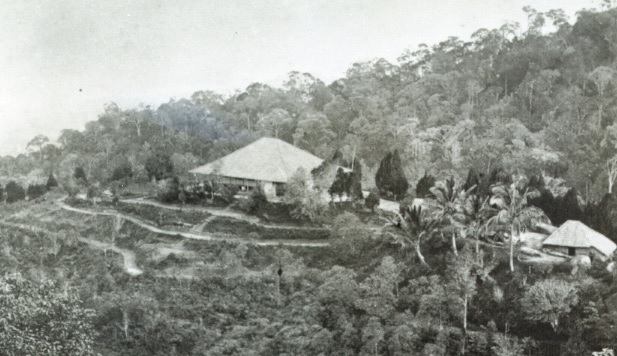Sanatorium. Retreat. Home. The bungalows up on the Hill played different roles throughout Penang’s history.
The first structures to appear on top of Penang Hill were almost certainly a flagstaff for signalling the arrival of shipping, together with a small building to house a military detachment. These were in place by 1793, with the soldier’s task being to maintain a lookout and send signals to the town, although they were able to spend their considerable free time cultivating a garden. Occupants of George Town looked to the top of the Hill for news of the arrival of shipping, so naturally, it became known as Flagstaff Hill, or Bukit Bendera. Ten years later, in the first years of the 19th century, the cool temperatures and expansive views at the Hill’s summit had attracted a governor’s residence and a sanatorium for East India Company employees.
As the advantages of a Hill bungalow came to be more generally appreciated, the main ridgeline of Penang Hill and each of its minor bumps and crests were occupied by private bungalows; seemingly everyone wanted a place on the Hill where they might retreat from the heat below. Indeed, demand became so strong that in 1810 a raffle was held to dispose of one of the last remaining desirable sites.

By the middle of the 19th century, the value of Penang Hill as a sanatorium and convalescent retreat was well established, with planters and colonial officials travelling from as far afield as Burma and Sarawak to stay for a month or more on the Hill in an attempt to recover their health. More bungalows and sanatoria were built, while their surroundings were cleared for extensive gardens filled with imported temperate plants such as roses and strawberries, or for spice plantations. Lomond, on a spur beneath the former Crag Hotel and with superb views over George Town, was in many ways a typical Hill bungalow. Our earliest record of a bungalow at Lomond comes from a brief notice in The Straits Times on June 22, 1852:
For sale, privately, the Bungalow on the Great Hill, called Lomond Hill, the property of Lieut Col James Low, together with all the furniture now in it. There are about 900 Clove trees planted round the House.







